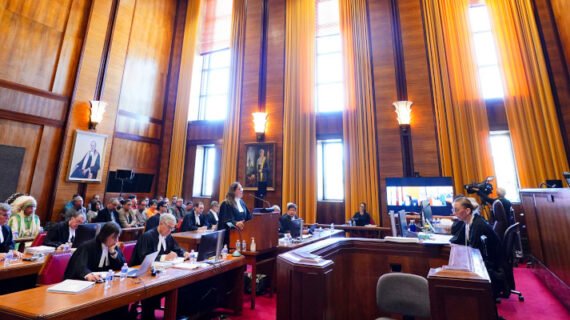Last week proved to be a major one for the Canadian news media. It started with significant layoffs across Bell Media’s news division including its flagship program CTV News. It ended with the imminent passage of Bill C-18 which mandates Meta and Google to compensate publishers for their online news content. Presumably the latter aims to minimize the risk of the former. The bigger risk however is that it further erodes the public’s trust in the media’s independence and undermines much-needed innovation in the sector.
The case for Bill C-18 rests on different arguments about how the two big tech firms have come to dominate the digital advertising market and ostensibly benefit from the online content produced by journalistic outlets. But the underlying rationale is that the news media industry is in a precarious financial position and mandated agreements with Meta and Google would inject urgent resources into it. It’s not really much more complicated or sophisticated than that.
Even its proponents tend to concede that the legislation has been conceived in crisis and that the short-term benefits of a cash infusion for the beleaguered sector have outweighed the long-term costs including second-order effects on the practice of journalism itself or the possible tensions between the interests of legacy media and independent upstarts. A cash-flow crunch, in other words, has come to trump the typical trade-offs inherent to the policymaking process.
It is true that C-18 may help in the short term. The Parliamentary Budget Office estimates that the legislation could produce as much as $329 million in annual payments to eligible news media companies.
The accompanying costs however shouldn’t be underestimated. One of the biggest may be to journalistic independence. The PBO’s estimates assume that the annual payments to news media businesses under the legislation will represent 30 percent of the cost of content creation. Yet that’s not the full scope of direct and indirect public subsidies to the industry. As Taylor Owen, a leading scholar on the internet and media, observes in a forthcoming episode of Hub Dialogues, the total level of support between the government and big tech companies could reach as much as 50 percent of total newsroom costs.
There’s something perverse about the news media relying so much on two funding sources which it often and rightly finds itself scrutinizing: big government and big tech. The potential consequences for journalistic decision-making as well as the public trust are profound. It risks harming the industry’s capacity to hold governments and tech companies accountable and fundamentally changing its relationship with its readers and viewers. The long-term damage won’t be measured in dollars but rather in the diminution of the principles and values that underpin an independent media at the precise moment that we need them the most to push back against the rise of disinformation.
There’s also the inherent problem of the government adjudicating journalism. Journalists have long resisted calls for credentialization on the grounds that it compromises their independence. But government intervention into the industry essentially necessitates it. The government must make judgements about which organizations are eligible for public subsidies according to some criteria. Otherwise everyone with SubStack or a Twitter account could presumably lay claim to government support. The result is back-door credentialing that will henceforth place tremendous power in the hands of regulators over the practice of journalism in Canada.

And then there are the risks to innovation and experimentation in the sector. We don’t diminish the painful consequences of the market disruption to the news media. It has been extremely challenging for media outlets and affected a lot of high-quality journalists. That’s regrettably intrinsic to Schumpeter’s notion of creative destruction.
But the creative part of his famous formulation is now manifesting itself. We’re seeing some in the legacy media reconceptualize themselves and new upstarts testing out alternative business models. The process isn’t linear and there are inevitable setbacks. Still there’s reason for some optimism that although journalism will be paid for and function differently than it has in the past, it will ultimately come out the other end with renewed energy, dynamism, and purpose.
Subsidizing the status quo risks distorting that process and locking in failed business models. Yes, it may help to keep some companies afloat for now. But it will also create perverse arbitrage opportunities for clever investors in the short term and discourage the types of structural changes that will be required for news media outlets to survive over the long term.
The key point here is that while the short-termism inherent to Bill C-18 is somewhat understandable in light of ongoing challenges in the news media industry, it’s a poor basis for good public policy. We fear that the long-term costs will outweigh any short-term benefits. The biggest risk is that it may be too late by the time we find out.




